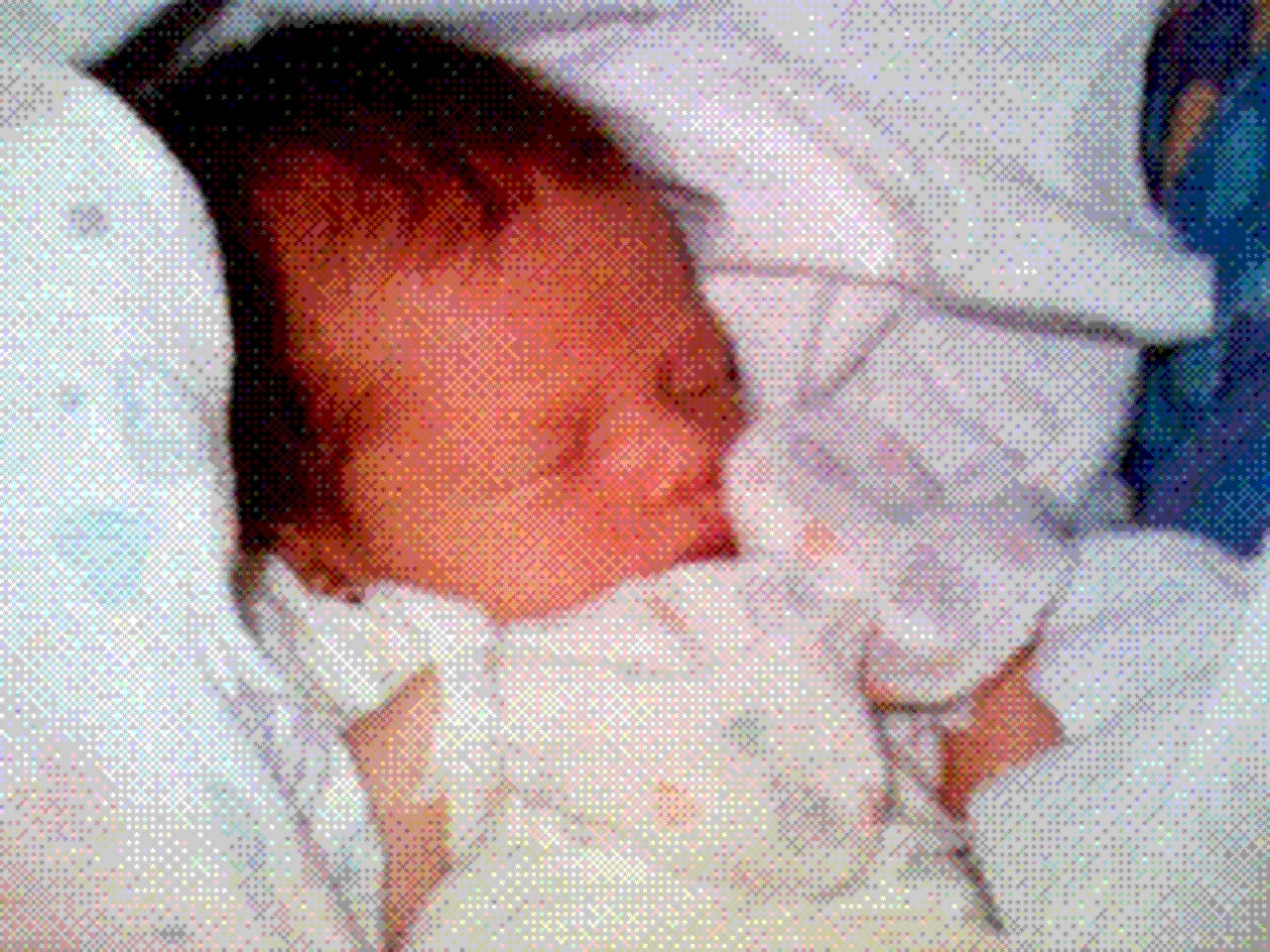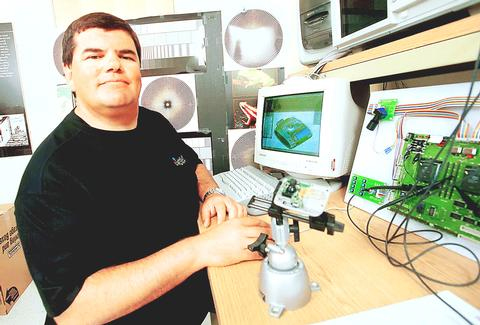The Creation of the Camera-Phone and Instant-Picture-Mail
Twenty years ago on June 11th 1997, I shared instantly the first camera-phone photo of the birth of my daughter Sophie. Today she is a university student and over 2 trillion photos will be instantly shared this year alone. Every smartphone is a camera-phone. Here is how it all happened in 1997, when the web was only 4 years old and cellular phones were analog with ultra limited wireless bandwidth.
First step 1996/1997: Building the server service infrastructure: For a whole year before June 1997 I had been working on a web/notification system that was capable of uploading a picture and text annotations securely and reliably and sending link-backs through email notifications to a stored list on a server and allowing list members to comment. Remember it was 1996/97, the web was very young and nothing like this existed. The server architecture that I had designed and deployed is in general the blueprint for all social media today: Store once, broadcast notifications and let people link back on demand and comment. That’s how Instagram, Twitter, Facebook, LinkedIn and many others are function. In 1997 this architecture was key to scalability because bandwidth was limited and it was prohibitive, for example, to send the same picture to 500 friends. Today the same architecture is essential because while there is bandwidth, we are working with millions of views and potential viral phenomena. Therefore the same smart “frugal architecture” makes sense. I called this “Instant-Picture-Mail” at the time.
Digital cameras and cell phones in 1997: For the first time in 1997 there was a successful and broadly available digital camera at a reasonable price – the Casio QV. It was 1/4 VGA and made pixelated but nice 320 by 240 pictures. Also, there was a very successful StarTAC Motorola flip phone in the U.S. It was so successful that it had a car speaker kit with a modular plug that allowed for hands-free use of the phone in the car. (That becomes important as part of this invention)
Before June 11th 1997: I had the server-service infrastructure functional as I mentioned. Today we’d call this the “cloud infrastructure”. I also had a Casio digital camera, a Motorola flip phone and a laptop. The camera was designed to upload pictures to the laptop with a special cable. However, there was no practical way to connect the laptop to the StartTac and control batched jobs of for example, uploading a series of pictures to a cloud based system. The laptop didn’t talk to the phone. Yet the phone could send data at 1200 baud over U.S. wireless analog networks. The combination of the Casio Camera, the Toshiba laptop, and the Motorola StartTac were the prototype of a camera-phone that I rapidly integrated on a breadboard thereafter: The Casio Camera because a miniature CMOS imaging sensor, the Toshiba Laptop a small embedded MCU all integrated with cell phone module, both analog for the US and Digital for Japan for example.
 The first “Instant-Picture-Mail” picture shared with 2000 friends and family across the globe: June 11th 1997, Sophie’s birth picture
The first “Instant-Picture-Mail” picture shared with 2000 friends and family across the globe: June 11th 1997, Sophie’s birth picture
On June 11, 1997: When we arrived at the Sutter maternity center we had a nice, large private room, with a big desk. We were told that we came “early,” and that we could either go home or stay. We stayed and settled in. I had the camera, the phone, the laptop and the service-server-system was running at home and functional. It was clear there was a hardware challenge in interfacing the phone to the laptop. I had written a control program on the laptop that uploaded pictures from the camera, used a modem and could upload them to the Service-Server-System with a tag as to which list of friends and family to notify. Then I remembered that I had a StarTAC speakerphone kit in my car. I literally ran down to my car, took out the whole speaker phone kit and started working frantically at creating a software/firmware/hardware interface using the “butt plug” of the Car-Kit to interface the laptop modem to the StartTac 1200 baud modem. My wife Sonia gave me some time because we were 18 hours early. When Sophie took her first breath, all was working and tested. About 2,000 friends and family received the picture around the world. I called it “Instant-Picture-Mail”. We immediately started getting emails and annotations back asking “How did you do this?” and “Can I have one of those?”. That’s when we realized we had something and what we needed now was to integrate the hardware in one elegant component.
Integrating: Immediately it became clear that we needed a CMOS sensor and an MCU integrated into phones. We built these prototypes that were interfaced with the exact software/server/service-infrastructure “Instant-Picture-Mail”.
 Integrating, CMOS Imaging Sensor, MCU and Cellular phone modules, late 1997
Integrating, CMOS Imaging Sensor, MCU and Cellular phone modules, late 1997
Paradigm shift and Instant-Picture-Mail success: It was clear to me that this was all a game changer and that this was the future of two of America’s most successful companies, Kodak and Polaroid, so I met with their CEOs and core teams. They all had wireless projects, and all could transmit pictures wirelessly and could not envision “Point shoot and share instantly”. No printing, no film, no paper, and no silver halide film. They all had billions of dollars in business, comfortable suites, armies of management consultants, tech consultants and pundits that just didn’t get it. Yes, I was trying to convince them that the future was digital photography “inside the phone” with the Instant-Picture-Mail software/server/service-infrastructure. They hired consultants, market pundits and they all collectively came to the conclusion that phones would be focused on voice (this is before texting) and that cameras would become wireless. Both Kodak and Polaroid went bankrupt and so did Motorola. Nothing could stop this paradigm shift. I couldn’t find anyone in the U.S. with the vision to launch “Instant-Picture-Mail”. I also had no success with my good contacts at big players in Japan, such as NTT Docomo. However, a small Japanese carrier – J-Phone – was enthusiastic and brought in Sharp to design a “Instant-Picture-Mail phone”. In Japanese Sha-Mail means Picture-Mail. It was a great success and it really put J-phone on the map. J-phone is now owned by Softbank. We launched the Camera-Phone with Instant-Picture-Mail in Japan in late 1999.
Return to the U.S. with success: Wired Magazine noticed our success with “Instant-Picture-Mail” in Japan, and in its “Death of Napster Issue” (the one with the funeral black cover), writer Bob Parks wrote “The Big Picture,” cover story which described my creation and some of my IP. The management team at Sprint and in particular two visionary executives: Pierre Barbeau and Danny Bowman, read wired and called me up: “We want to be the first with “Instant-Picture-Mail” in the U.S.” Sprint, Casio and my company LightSurf worked together to launch the first camera-phone in the U.S. in 2002 with the Instant-Picture-Mail software/server/service-infrastructure. This differentiated Sprint, and our partner became the fastest growing carrier for several years. It took two years for ATT and Verizon to launch in the U.S.
What about other claims of inventions: Many companies put photo-sensors in phones or wireless modules in cameras, including Kodak, Polaroid, Motorola. None of them understood that the success of the camera-phone is all about instantly sharing pictures with the cloud-based Instant-Picture-Mail software/server/service-infrastructure. In fact, it’s even amusing to think that none of these projects was interesting enough that anyone has kept shared pictures. You’d think that if you’d created something new and exciting like the camera-phone you’d share a picture or two or at least keep some!
It’s great to reflect 20 years later how the camera-phone is a game-changer for society in so many ways. In the last decade I have assembled the best team of scientists, mathematicians, engineers at Fullpower we are now looking forward to the next paradigm shift. We believe that Sleep will become Digital Sleep focused on measurable, quantified sleep efficiency and performance. We’re pioneering artificial intelligence, machine learning and data science with our Sleeptracker technology to bring a long term roadmap to digital sleep. That’s a game changer for an industry that has been focused on foam and coils for the last 200 years. Just like Kodak and Polaroid were focused on their large profitable brick-and-mortar silver halide empires before they fell into oblivion. Paradigm shifts are both a great opportunity for newcomers and a challenge for incumbents.